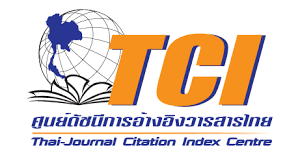Influence of filler network on thermo-chemical de-vulcanization efficiency of carbon black filled natural rubber
Keywords:
Filler network, Carbon black, Natural rubber, Rubber RecyclingAbstract
Carbon black is often used as the reinforcing filler in tires since it plays an important role in improvement of tires mechanical properties such as abrasion, stiffness, modulus and fatigue life. In this study, natural rubber (NR) filled with various loadings of carbon black was prepared. Then, the NR vulcanizates were de-vulcanized via thermo-chemical method using diphenyl disulfide as de-vulcanization aid. The de-vulcanization efficiency was analyzed by relationship between sol fraction and crosslink density of the de-vulcanizates. It is found that the de-vulcanization efficiency is influenced by filler loading. This is attributed to the degree of filler network formation in a rubber matrix which is depended on the filler loadings. In the unfilled de-vulcanizates the results showed that almost 100% of sol fraction and the crosslink density reduced to almost zero are observed. Adding carbon black results in a decrease of sol fraction and increase of crosslink densities. This is due to during de-vulcanization some occurred reactive radicals reacted with active site of carbon black surfaces in filler network to form gels of complex compound. Hence, the de-vulcanization efficiency is lower with increasing carbon black loadings.Downloads
References
O. Grigoryeva, A. Fainleib, O. Starostenko, I. Danilenko, N. Kozak, amd G. Dudarenko, “Ground tire rubber (GTR) reclamation: virgin rubber/reclaimed GTR (RE) vulcanizates,” Rubber chemistry and technology, vol. 77, no. 1, pp. 131-146, 2004.
C. S. L. Baker and I. R. Wallance, “Natural rubber truck tyre compounds for improved wear performance,” Journal of Natural Rubber Research, vol. 1, no. 4, pp. 270-285, 1986.
D.R. Paul and S. Newman, Polymer blends. New York: Academic Press, Inc., 1978.
J-B. Donnet and A. Voet, Carbon black, physics, chemistry and elastomer reinforcement. New York: Marcel Dekker, Inc., 1976
Y. Fukahori, “New progress in the theory and model of carbon black reinforcement of elastomers,” Journal of Apply Polymer Science, vol. 95, pp. 66-67, 2005.
E. Demirhan, F. Kandemirli, and M. Kandemirli, “The effect of furnace carbon blacks on the mechanical and the rheological properties of SBR 1502 styrene butadiene rubber,” Materials and Design, vol. 28, pp. 1326-1329, 2007.
H. H. Hassan, E. Ateia, N. A. Darwish, S. F. Halim, and A. K. Abd El-Aziz, “Effect of filler concentration on the physic-mechanical properties of super abrasion furnace black and silica loaded styrene butadiene rubber,” Materials and Design, vol. 34, pp. 533-540, 2012.
B. P. Sahoo, K. Naskar, and D. Kumar, “Conductive carbon black-filled ethylene acrylic elastomer vulcanizates: Physicomechanical, thermal, and electrical properties,” Journal of Materials Science, vol. 47, no. 5, pp. 2421-2433, 2012.
P. J. Flory and J. Rehner, “Statistical mechanics of crosslinked polymer networks II. Swelling,” The Journal of Chemical Physics, vol. 11, pp. 521-526. 1943.
G. Kraus, “Swelling of filler-reinforced vulcanizates,” Journal of Applied Polymer Science, vol. 7, pp. 861-871, 1963.
M. M. Horikx, “Chain scissions in a polymer network,” Journal of Polymer Science, vol. 19, pp. 445-454, 1956.
M. A. L. Verbruggen, L. van der Does, J. W. M. Noordermeer, M. van Duin, and H.J. Manuel, “Mechaisms involved in the recycling of NR and EPDM,” Rubber chemistry and technology, vol. 72, pp. 731-740, 1999.
J. Frohlich, W. Niedermeier, and H-D. Luginsland, “The effect of filler-filler and filler-elastomer interaction on rubber reinforcement,” Composites: Part A: Applied Science and Manufacturing,
P. J. Flory and J. Am, “Molecular size distribution in three dimensional polymers. III. Tetrafunctional brancing units,” Journal of the American Chemical Society, vol. 63, pp. 3096- 31000, 1941.
S. Saiwari, “Post-consumer tires back into new tires, De-vulcanization and re-utilization of passerger car,” Ph.D. Thesis, University of Twente, pp. 90, 2013.
B. Sripornsawat, A. Saiwari, S. Pichaiyut, and C. Nakason, “Influence of ground tire rubber devulcanization conditions on properties of its thermoplastic vulcanizate blends with copolyester,” European Polymer Journal, vol. 85, pp. 279-297, 2016. vol. 36, no. 4, pp. 449-460, 2005.
Downloads
Published
How to Cite
Issue
Section
License
Copyright (c) 2019 Journal of Metals, Materials and Minerals

This work is licensed under a Creative Commons Attribution-NonCommercial-NoDerivatives 4.0 International License.
Authors who publish in this journal agree to the following terms:
- Authors retain copyright and grant the journal right of first publication with the work simultaneously licensed under a Creative Commons Attribution License that allows others to share the work with an acknowledgment of the work's authorship and initial publication in this journal.
- Authors are able to enter into separate, additional contractual arrangements for the non-exclusive distribution of the journal's published version of the work (e.g., post it to an institutional repository or publish it in a book), with an acknowledgment of its initial publication in this journal.








